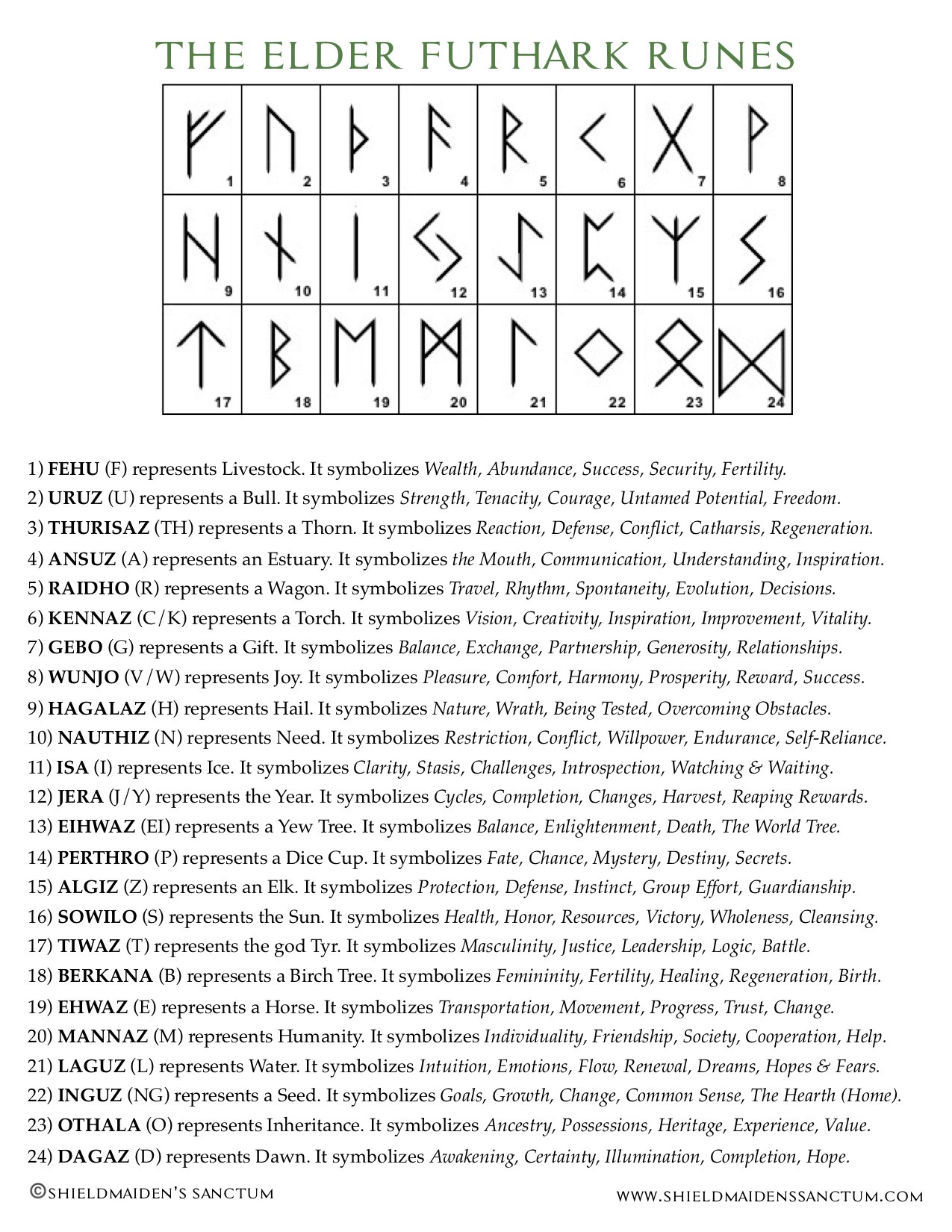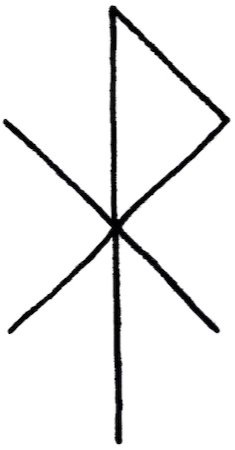Symbols Used In Shieldmaiden’s Sanctum Creations
As an individual and as a business, I do not condone or support individuals or groups who use the symbolism of Northern European mythology and/or Northern European history to justify supremacy viewpoints.
RUNES are the symbols that make up the alphabets used to write Germanic languages for many centuries, before the Latin alphabet (which we still use today) rose in popularity in Europe.
Scholars call symbols in the Latin alphabet “letters” and the symbols in the Germanic alphabets “runes” to differentiate them for historical reasons, but letters and runes ultimately served the same purpose — they allowed a group of people to write down words that would otherwise only exist in oral tradition.
Runic alphabets were multi-functional; in addition to being phonetic symbols, meaning they represented the spoken sounds of Germanic language, they were also visual symbols of elements of the natural world that were important in Norse society. For example, the first rune in the Elder Futhark — Fehu, ᚠ — represents both the letter F and the sound of F, as well as livestock or cattle which is represented in its horn-like shaping.
There were several different runic alphabets used throughout the centuries, including the Elder Futhark and the Younger Futhark. I use the Elder Futhark almost exclusively in my creations.
If you would like a printable copy of my personalized list of the Elder Futhark runes and their meanings, just click the green link to the right of this sentence. (Please note, this is for your own personal use, and not for commercial or trade purposes. If you would like to use this sheet for your business, click here.)
BINDRUNES are symbols made up of two or more runes. Though they are not often found on Viking Age artifacts, they were commonly used in periods of time before and after the Viking Age, as evidenced by archeological finds.
Bindrunes were used for decorative or ornamental purposes, and they could also be used as a symbolic signature for a person.
Bindrunes are a powerful and concise way to bring the positive / helpful energy of multiple runes to one symbol that can be used in a variety of ways (altar work, ritual work, wearable talisman, etc).
A modern-day example of a bindrune is the Bluetooth logo; its symbol is a combination of the Younger Futhark runes ᚼ and ᛒ.
To the right is another example of a bindrune, one I drew by hand. This bindrune combines Gebo (ᚷ) and Wunjo (ᚹ) to create a bindrune I call “Joyful Meeting”
SPELL STAVES, or Galdrastafir, are sigils (symbols with specific magical design or purpose) preserved in Icelandic books about magic. These books are known as grimoires and they date back to the 17th century. Some spell staves are thought to be even older, possibly dating back to the 14th century. Though they most likely did not exist during the Viking Age, spell staves are a symbolic art form strongly influenced by Scandinavian heritage and history, as well as Medieval European esoteric traditions.
I hand-draw each of the spell staves I use in my work before converting them to digital files to ensure they are infused with positive personal intention.
Below are some of the spell staves used in Shieldmaiden’s Sanctum creations (images are for reference and not commercial/trade use):
This spell stave is known as Veldismagn, or Abundance Amplifier, and it has the energetic intention of channeling positive energy in the direction of its owner while deflecting any negative energy that does not assist in the abundance generation process.
This spell stave is known as Lífsstafur, or Stave Of Life, and it has the energetic intention of amplifying and stabilizing the positive forces that contribute to a healthy and well-rounded life. Abundance, health + wealth, personal growth, and safety can all be incorporated into this stave’s meaning.
The Dream Stave, or Draumstafur, was believed to aid the bearer in dreaming of and then manifesting unfulfilled desires of the heart.
The Prayer Stave, or Bænarstafur, was believed to help its bearer receive whatever they asked or wished for, especially when held in the palm of the hand.
This spell stave is known as Að Fá Stúlku, or Attract Affection, and it has the energetic intention of attracting and amplifying the positive feelings that already exist within a relationship, be it platonic, professional, familial, friendly, or romantic.
This spell stave is known as the Vegvisir, or Wayfinder, and it has an energetic intention similar to a compass. It helps make sure its owner never gets lost or loses their sense of direction, even in the worst of storms or most difficult of times.
The Helm Of Awe, or Ægishjálmr, was believed to bestow the bearer with powerful energy that beamed out through the eyes and awed those around them.
The Protection Cross, or Rotaskross, was believed to protect the bearer from evil forces, as well as destructive and/or manipulative energies.


